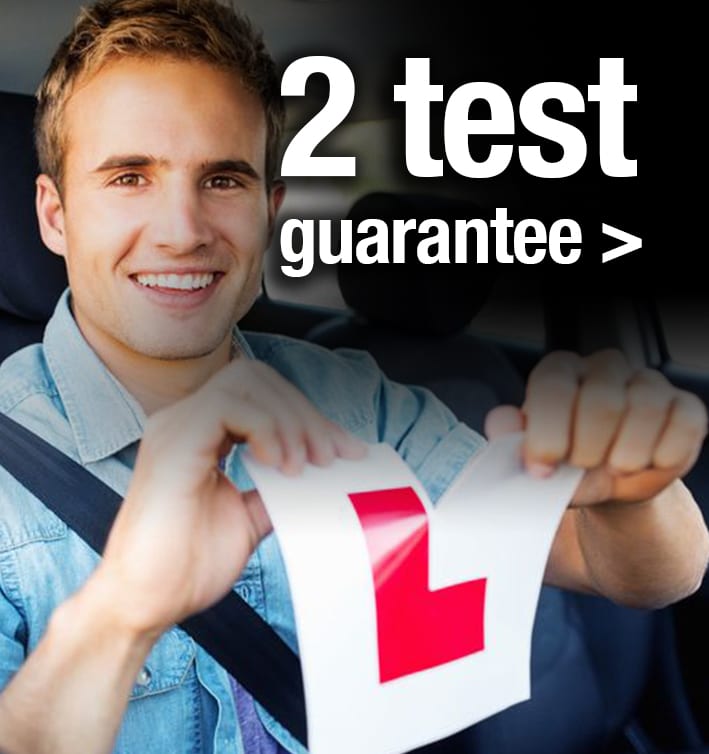 In this blog, we will be offering you contrasting methods for learning to drive, so that you can better answer the question are crash courses any good?
In this blog, we will be offering you contrasting methods for learning to drive, so that you can better answer the question are crash courses any good?
A crash course or perhaps more commonly referred to as intensive driving course is broadly speaking an accelerated learning programme. The opportunity that it provides is primarily related to the decreased time taken to learn. This method of learning is in high demand as it appeals to people who have a specific time-sensitive goal. One common example is related to starting university and needing to be able to drive. But often having a full driving licence can be a requirement for a new job. In our experience of providing these courses over many years, they tend to appeal to customers who are returning to learning to drive a bit later in their life. These customers may have started the process in their teens, but for one reason or another, their eye was taken off the ball, and so they find that they return to it 10 years later. And those types of customers tend to have a high chance of success because they are slightly older and have the benefit of knowing how they learn (more on this later), but also, they are highly motivated and effective in their organisation.
“I’ve had many driving instructors over the years and I can safely say that Tom is the best I’ve found” James Baldwin from Peterborough
Before we get ahead of ourselves, let’s first of all describe what the ordinary process is for learning to drive. Independent DVSA research conducted across the UK informs us that it will take the average person about 45 hours driving training with a registered driving instructor PLUS 20 hours doing private practice with Mum or Dad. So the bit that most people tend to ignore with that factual research is that the combined time is on average 65 hours. It is important to recognise that point, as not everyone has access to private lessons. Private lessons in the main offer a wonderful opportunity to reinforce learning that occurs with a driving instructor.
“I didn’t think I would be able to learn to drive so quick but you proved me wrong” Ben Parker from Bourne
So what anyone needs to be mindful about is signing up to an accelerated learning programme that has a pre-determined, fixed number of hours. To avoid a disappointing outcome, it will be necessary to have the number of hours that is needed for your personal number of previous hours training, based on the DVSA research.
“I could feel myself progressing as the days went on and as I was told about different ways of learning and developing new skills which is very good for confidence while driving especially as a learner” Billy Brooks from Castle Bytham
Let me give you some examples:
Pupil A has done 20 hours with two driving instructors previously and 12 hours practising with Mum. So, this pupil has about 25 hours remaining with a driving instructor and 8 on private practice. We must always be careful when we refer to the time it takes to learn because different people can learn at very different rates – but here we are talking about averages.
Pupil B has no experience of driving on roads. She has done a little bit of driving with Dad off-road so has a basic idea of things, but it has only been in total about 3 hours. This pupil would do well to calculate needing about 45 hours with a driving instructor and about 20 private practice.
“I would recommend an intensive course to anybody. Same amount of hours over a shorter space of time which in my opinion is better than spread out over what can sometimes end up as months!!” Sarah Shepherd from Pointon
Once you know roughly how many hours are needed, the beauty with some crash course providers is that they are able to accommodate precisely what is needed; no waste of time/money taking hours you do not need and also enough training to give you a realistic chance of passing a driving test. Crucially, they will offer you timescales of completing those training hours in far shorter periods of time than traditional driving lessons. The DVSA have also discovered that it takes people on average, 7 months to learn to drive. So if you flick through the blog here at BIG TOM, you’ll notice that customers are passing their driving test within just 4 weeks of booking up their course.
“I can’t thank BIG TOM enough and for someone like me, who has unpleasant experiences with driving/Instructors over the years, I couldn’t recommend BIG TOM enough!!” Abbie Scott-Brown from Ruskington
So in terms of timescales, you can begin to see why this way of training does appeal to many people. But one question that you may be wondering is whether the reduced period taken to learn has detrimental outcomes to the quality of learning. If a training provider, regardless of what timescales they work to, only teaches pupils to pass a driving test e.g. only practising on test routes, then there is a case that the ability of those learners to drive independently, anywhere is compromised. But that risk is equally with the traditional pay as you go driving lessons as it is with crash courses. At BIG TOM our customers are encouraged to drive to different towns and cities, across county borders so as to develop a variety of driving experience. In other words, we recognise the importance of the quality of training as being a higher priority than only driving around in one town/city for an hour or two.
“I learnt so much in such a short space of time and am very happy with the progress I made” Paris Padley from Boston
When someone learns a new practical skill or set of skills, you want them to remember the details. When you learn to ski, for example, you take lessons each day, and you recall the important details and reflect on how you found the previous session. These are important techniques that we use with driving training as well. Indeed, one of the limitations of having a driving lesson once per week is that it is sometimes hard for pupils to remember the key details from the week before. On a BIG TOM intensive driving course, however, your training is as frequent as you want it to be, but generally speaking, occurs more frequently than once per week. The technical details are fresh in your mind, as are your reflections on how you are doing. You receive instant feedback on how you are doing, and because of the regularity, this feedback tends to “stick” easier than receiving feedback once per week.
“I would definitely recommend this course for anyone, whether that be learning to drive for the first time or practicing techniques you’ve already learnt”
Emily Ashcroft from Cranwell
So what has been outlined above are the pros and cons of learning using different techniques. It is an inescapable fact that some pupils will remain highly motivated and able to focus on an intensive course whereas others would quite happily plod along with a lesson a week for 7 months.
“In my opinion more useful than 1 hour lessons” Ben Robinson from Bourne
The choice, as ever, is entirely yours. Want to check if a crash course is suitable for you? Click here for an immediate no-obligation assessment




